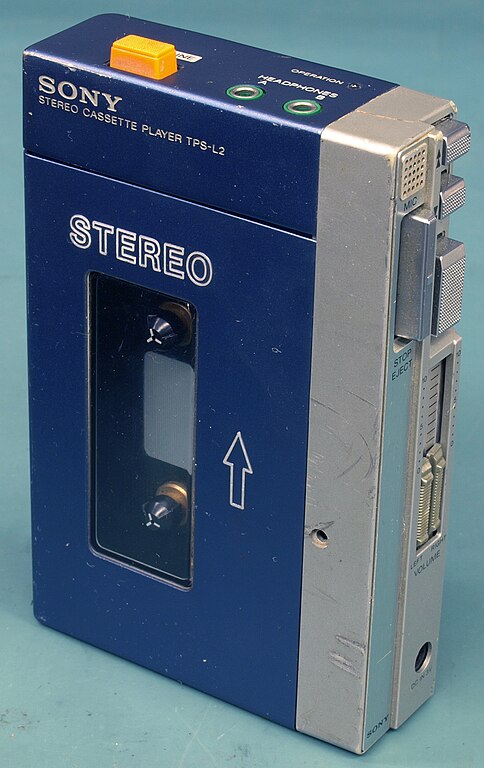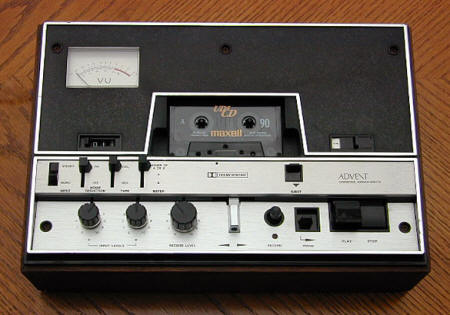General Discussion
Related: Editorials & Other Articles, Issue Forums, Alliance Forums, Region Forums40 Years Ago Today; Sony introduces its "Walkman"

Original Sony Walkman TPS-L2 from 1979
Walkman is a series of portable media players and some Xperia mobile phones manufactured by Sony. The original Walkman, released in 1979, was a portable cassette player that changed listening habits by allowing people to listen to music on the move. It was devised by Sony cofounder Masaru Ibuka, who felt Sony's existing portable player was too unwieldy and expensive. A prototype was built from a modified Sony Pressman, a compact tape recorder designed for journalists.
The Walkman was followed by a series of international releases; as overseas sales companies objected to the Japanese-English name, it was sold under several names, including Soundabout in the United States, Freestyle in Australia and Sweden, and Stowaway in the UK. Eventually, in the early 1980s, Walkman caught on globally and Sony used the name worldwide. In everyday language, "walkman" became a generic term, referring to personal stereos of any producer or brand. Sony continues to use the Walkman brand for most of its portable audio devices.
Development
Magnetic cassette technology was developed in 1963 by the Dutch electronics firm Philips. In the late 1960s, the introduction of prerecorded cassette tapes made it possible to listen to tapes of music on car stereos, though vinyl remained the most popular format for home listening.
Sony co-founder Masaru Ibuka used Sony's bulky TC-D5 cassette recorder to listen to music while traveling for business. He asked executive deputy president Norio Ohga to design a playback-only stereo version optimized for headphone use. The first prototype was built from a modified Sony Pressman, a mono cassette recorder.
The metal-cased blue-and-silver Walkman TPS-L2, the world's first low-cost portable stereo, went on sale in Japan on July 1, 1979, and was sold for around ¥39,433.58 (or $150.00), or ¥57,109.02 (or $498.66) adjusted for inflation. Though Sony predicted it would sell about 5,000 units a month, it sold more than 50,000 in the first two months. Sony introduced the Walkman in the US as the Soundabout and the UK as the Stowaway; as developing new, copyright-free names in every country was expensive, Sony settled on Walkman, a play on Pressman. The TPS-L2 was introduced in the U.S. in June 1980.
In October 2010, it was reported that manufacturing of the cassette-based Walkman would cease in Japan, but that Sony would continue production of the device in China to accommodate users abroad, including in the United States, Europe, and some Asian countries. Once the final units are sold, they will not be available from the manufacturer. With the increased popularity of MP3 players, it was the CD (compact disc) player that originally caused the decline of the Walkman. Sony continues to make cassette-based Walkman devices in China for the US and other overseas markets; however, they were discontinued in Japan only on October 23, 2010.
The original idea for a portable stereo is credited to Brazilian-German inventor Andreas Pavel, who patented the Stereobelt in 1977. Though Sony agreed to pay Pavel royalties, it refused to recognize him as the inventor of the personal stereo until a legal settlement in 2003.
Marketing

Some products of the Walkman line (2006).
The marketing of the Walkman introduced the idea of 'Japanese-ness' into global culture, synonymous with miniaturization and high-technology. The "Walk-men" and "Walk-women" in advertisements were created to be the ideal reflections of the subject watching.
A major component of the Walkman advertising campaign was personalization of the device. Prior to the Walkman, the common device for portable music was the portable radio, which could only offer listeners standard music broadcasts. Having the ability to customize a playlist was a new and exciting revolution in music technology. Potential buyers had the opportunity to choose their perfect match in terms of mobile listening technology. The ability to play your own music and listen privately was a huge selling point of the Walkman, especially amongst teens, who greatly contributed to its success. Despite "all this technological diversity, there must be one which is the perfect choice for you". This method of marketing to an extremely expansive user-base while maintaining the idea that the product was made for each individual "[got] the best of all possible worlds—mass marketing and personal differentiation".
Impact
According to Time, the Walkman's "unprecedented combination of portability (it ran on two AA batteries) and privacy (it featured a headphone jack but no external speaker) made it the ideal product for thousands of consumers looking for a compact portable stereo that they could take with them anywhere".
The Walkman had a major influence on 1980s culture. In 1986, the word "Walkman" entered the Oxford English Dictionary. Millions used the Walkman during exercise, coinciding with the aerobics craze; between 1987 and 1997, the height of the Walkman's popularity, the number of people who said they walked for exercise increased by 30%. Other firms, including Aiwa, Panasonic and Toshiba, produced similar products, and in 1983 cassettes outsold vinyl for the first time.
In German-speaking countries, the use of "walkman" became generic, meaning a personal stereo of any make, to a degree that the Austrian Supreme Court of Justice ruled in 2002 that Sony could not prevent others from using the term "walkman" to describe similar goods. It is therefore an example of what marketing experts call the "genericide" of a brand.
The Walkman had a portable CD player successor, Sony's Discman. In turn, the Walkman and Discman are ancestors of digital audio players such as Apple's iPod.
</snip>
Cartoonist
(7,316 posts)Back in '65 I had one of these:

They came with an earplug so you could listen in private while you walked around.
Back in '72 I had one of these:

Note the handle so that you could carry it while you walked around. My headphones used the same earplug hole.
People talk about the Walkman as if they invented the wheel. It didn't even have a microphone.
Dennis Donovan
(18,770 posts)...and transistor radios, while cool, meant you could only listen to what the corporate music industry wanted you to listen to. ![]()
And, not for nothing, boom boxes were HEAVY! ![]()
USALiberal
(10,877 posts)Cartoonist
(7,316 posts)Still not impressed.
Elwood P Dowd
(11,443 posts)Cost about $350.00 back then ($2,000 in today's dollars). It was considered by some to be the best sounding cassette deck on the market. While it sounded damn good and better by far than my cheap Radio Shack model, it's recordings were not quite indistinguishable from the original LP played on a good turntable as some claimed. Improved versions of the Advent 201 came out as time went by, but then companies like Nakamichi, Revox and Tandberg introduced models that surpassed it.

Aristus
(66,327 posts)I got mine for Christmas of 1984. Just in time for schools to start cracking down on their use.
At my school, simply listening to music wasn't the only infraction. If an administrator saw even the headphones at all, they would stop you and confiscate your Walkman. Listening in the hall in-between classes was as forbidden as listening in class.
ProudLib72
(17,984 posts)I should find it because I'm sure it has Rum, Sodomy, and the Lash in it.
I still remember seeing a kid in my class come back from a trip to China with the first Discman I had ever seen. That was '86.